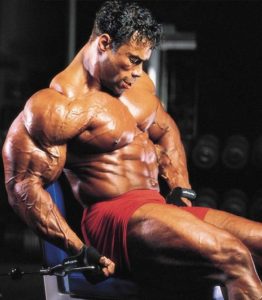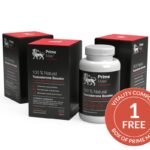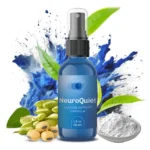For a serious athlete, each competitive season is a continuous struggle to become stronger and faster than the previous one. At the top of any sport, the best competitors are separated by the smallest of margins. It is your responsibility to find those small things that can separate you from the best! For me, a few small things turned out to be a few huge things.
Understanding the dynamics of recovery is important for every athlete. I have been called a classic over-trainer many times in the past. I never really understood the comment.
I knew that I trained very hard – “the more the better” was my motto.
As a result, I was chronically exhausted and unable to stay at my competition weight. After some research, and working with a certified nutritionist, I began to understand what the human body needs to recover.
Vegetables And Greens For Better Recovery
My nutritionist had an interesting way of explaining how the body works. He compared us to animals. He had a number of different animal posters on the wall. He asked me to look at the pictures and tell him what the animals had in common. There was a bear, a squirrel, a deer, and an elephant. The only thing I could see was that the animals on the wall were plant-eaters. That was his point. These animals are strong and fast because they live on the natural, healthy food found in their environment.
The animal pictures where followed by pictures of obese humans and statistics on the massive amounts of processed foods consumed in our environment.
Our bodies are meant to endure a lot, but we need to understand that, like a car, our bodies perform on what we put in them. As the saying goes, junk in, junk out.
I think everybody pretty much understands this. But for me, hearing it and thinking about it on a conscious level was the first step to getting on the right path.
Dynamics Of Recovery
 After making some simple changes in my diet, I was intrigued. I wanted to learn as much as I could to help my body perform its best.
After making some simple changes in my diet, I was intrigued. I wanted to learn as much as I could to help my body perform its best.
You can do the same!
Start by asking yourself, “why do I train my body in my chosen sport?” The answer is to get better. Whether your sport is basketball, track, and field, football, or tennis, all require a body that is strong, agile, and dedicated to a rigorous training routine.
Many athletes get into such a routine but follow-through only halfway. As I stated before, recovery is one of the most important elements of training, but it is also one of the most neglected. The dynamics of recovery begin after the day’s training session is over.
Learning about the body and how it recovers is the first step to becoming a better athlete.
Two Principles Keys To Understanding Recovery
- Anabolism
- Catabolism
Anabolism and catabolism are the primary reasons athletes endure intense training sessions.
During a workout, the body is being broken down or going through catabolism. Catabolism is defined as “to release energy, or reduce energy, which is used to generate ATP from ADP and Phosphate.” There is an entire scientific explanation of how the process works, but to keep it simple all you need to know is that catabolism is the break down of our muscles.
Shortening the catabolism phase enables us to become stronger, and to begin the process known as anabolism. Anabolism is the phase all athletes want to strive for because this is when our muscles repair themselves. When the anabolic phase is greater in scale and duration than the catabolic phase, improvements in muscle strength and size take place.
Studies have been done to measure when catabolism is at its greatest. After a strenuous workout, your body is in its highest catabolic phase for a period of 4 to 14 hours. However, there are many ways to immediately slow catabolism and begin building muscle again.
Reducing Catabolism
Anabolic metabolism occurs when you sleep. Getting a good night’s rest is the first and easiest way to reduce catabolism.
When we sleep our bodies go into an anabolic state. Damage done from our workout gets repaired, and our muscles are ready to go the following day.
The next step to reducing catabolism is to eat healthy and balanced meals. Remember the strong, fast, plant-eating animals on the wall? Those animals don’t train to get stronger, they eat plants; their diets fortify their strength.
We can learn from these animals. Like them, our bodies pull their resources from the foods we eat. As a general rule, you should have 3 well-balanced meals a day, plus 2-3 healthy snacks. Supplying your body with good food will make a huge difference.
“Try eating vegetables and fruit with every meal, and try staying away from ALL processed foods.”
The final tip I have for reducing the catabolic phase is to always have a protein shake, or whole food shake after a hard workout. The shake will be rapidly absorbed into your system and start the rebuilding cycle quicker than if you did nothing.
So Remember, After Your Workout Follow Three Easy Steps For Faster Recovery:
- Have a protein shake to immediately slow catabolism.
- Follow your shake with a well-balanced meal 1 hour, but never beyond 2 1/2 hours after your workout.
- Get a good night’s rest!
Supplements For The Body’s Anabolic State
There are a number of different supplements on the market to aid your body in the anabolic phase. You can read the below descriptions and decide which supplement is best for you. Good luck!
L-Arginine:
-
- L-Arginine is an essential amino acid that has been found to improve muscle recovery and increase the release of growth hormone. The supplement also boosts the immune system and is used to help cancer patients during treatment.
-
- L-Arginine can be taken at bedtime. The most common dosage is 4 to 10 grams taken on an empty stomach one hour before exercise and before sleeping.
ZMA:
- ZMA stands for Zinc Magnesium Anabolic. ZMA is a non-steroidal anabolic formula that contains all-natural forms of zinc and magnesium. ZMA nightly supplementation is proven to increase anabolic hormone levels as well as strength and power in athletes.






Leave a Reply